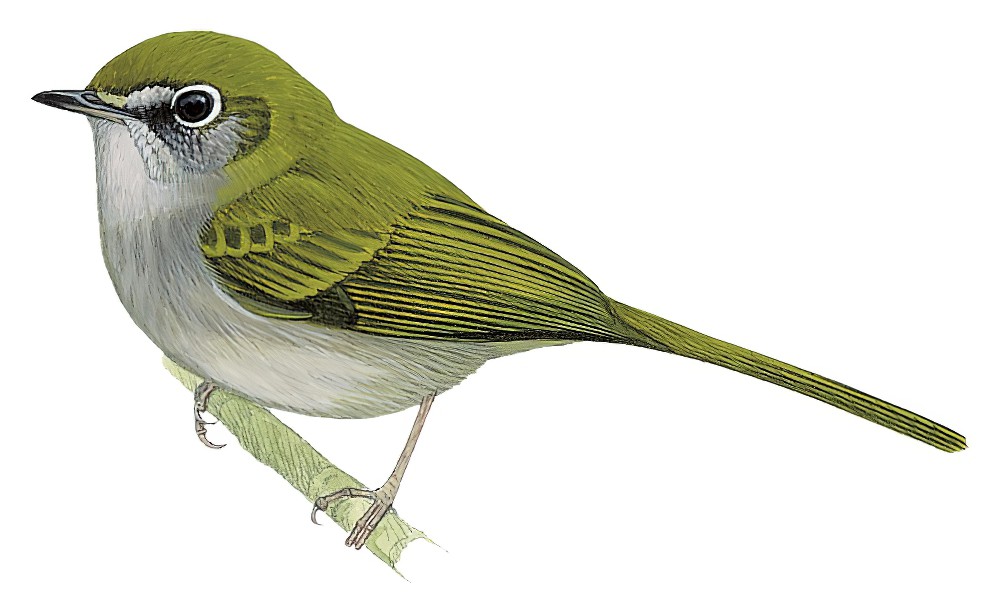Serra do Mar Tyrannulet / Phylloscartes difficilis

Serra do Mar Tyrannulet
SCI Name:
Protonym: Guracava difficilis Cat.FaunaBrazil. 1 p.271
Taxonomy: Passeriformes / Tyrannidae / Phylloscartes
Taxonomy Code: sdmtyr2
Type Locality: Campos do Itatiaia, Rio de Janeiro, Brazil.
Author: von Ihering, H & von Ihering, R
Publish Year: 1907
IUCN Status: Least Concern
DEFINITIONS
PHYLLOSCARTES
(Tyrannidae; Ϯ Mottle-cheeked Tyrannulet P. ventralis) Gr. φυλλον phullon leaf; σκαιρω skairō to skip, to dance; "Gen. PHYLLOSCARTES **) nov. gen. — Laub-Tachuri. 183. 1. P. ventralis Nob. Muscicapa ventralis "Natt." Temm. Pl. col. 275. 2. — Tyrannulus ventralis Id. Tabl. méth. p. 27. — Elania ventralis Gray Gen. B. I. p. 250. 15. — Leptopogon ventralis Bp. Consp. I. p. 186. — Euscarthmus ventralis Burm. Th. Bras. II. p. 491. ... **) Von φυλλον (Laub) und σκαρτης (Springer). Diese Gattung erinnert im Gefieder schon ganz an Leptopogon, hat aber einen breitern Schnabel mit weniger abgerundeter Firste und zeigt auch noch die für die Todinae characteristischen hohen Läufe." (Cabanis & Heine 1859); "Phylloscartes Cabanis and Heine, 1859, Mus. Heineanum, 2, p. 52. Type, by monotypy, Muscicapa ventralis Temminck." (Traylor in Peters 1979, VIII, 63).
Synon. Guracava, Leptotriccus, Phyllooecia.
difficilis
L. difficilis difficult, troublesome < dis asunder, apart; facilis easy < facere to make. Coined of species of uncertain systematic position and difficult to allocate, usually as a result of poorly preserved, mutilated, or limited type material.
● "Similar to Cisticola sylvia Reichenow, but striped above and slightly smaller. In general coloration it is not very unlike Cisticola emini Reichenow, though striped and more yellowish above and more strongly fulvous below." (Mearns 1912) (syn. Cisticola natalensis strangei).
● “Although the specimens from the west coast are not sufficiently perfect to allow a full criticism, I am inclined to think that they are really distinct, and that they will not constitute almost the single exception to the fact that no flycatcher is common to both east and west coasts. The colors are lighter, and duller ... The forehead has a peculiar hoary appearance ... In view of all these circumstances, therefore, it may be well to give it provisionally a new name, and none would be more appropriate than that of Empidonax difficilis” (Baird 1858) (Empidonax).
● “The present species was referred by Mr Salvin to G. dentirostris, but the smaller size and differently shaped bill induce me to believe that the two birds are distinct” (Sharpe 1888) (Geospiza).
● "Specimens from the middle area of the Orinoco, the Mérida region, and the state of Carabobo, Venezuela, are referred here with some hesitation. They are not quite typical" (Zimmer 1937) (subsp. Myiodynastes maculatus).
● "Como actualmente não temos presentes os exemplares typicos, não podemos dar descripção mais detalhada; limitamo nos, pois a estes nossos apontamentos e ás informações que amavalmente nos forneceram os srs. Hellmayr e Conde von Berlepsch, ficando reservada para publicação posterior a caracterização mais completa desta especie nova" (Ihering & Ihering 1906) (Phylloscartes).
UPPERCASE: current genus
Uppercase first letter: generic synonym
● and ● See: generic homonyms
lowercase: species and subspecies
●: early names, variants, mispellings
‡: extinct
†: type species
Gr.: ancient Greek
L.: Latin
<: derived from
syn: synonym of
/: separates historical and modern geographic names
ex: based on
TL: type locality
OD: original diagnosis (genus) or original description (species)












